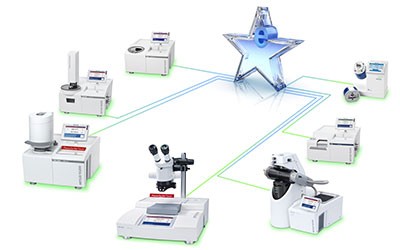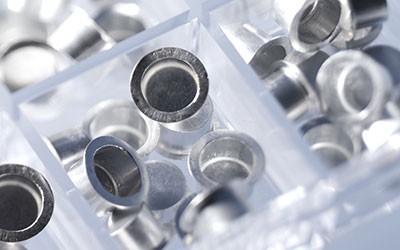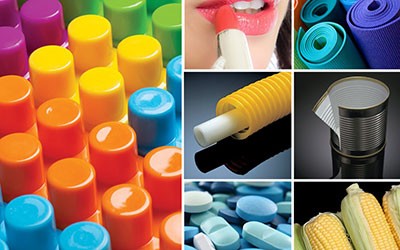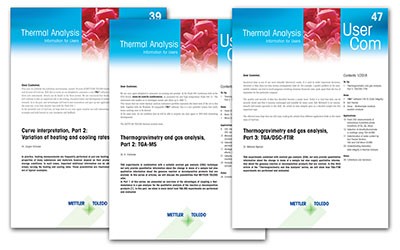
Thermal Analysis Options and Accessories
Provide More Insight and Accelerate Workflows
A wide range of quickly interchangeable options and accessories maximize performance of METTLER TOLEDO's Thermal Analysis Systems. These include high-sensitivity MultiSTAR® DSC Ceramic Sensors, the Sample Robot for enhanced workflows, optical accessory for visual observations and powerful solutions for evolved gas analysis, which help you acquire more information from a single experiment. Discover our full range below!
Advantages
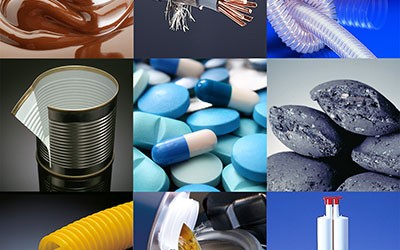
Maximum Versatility
Adapt your system to your changing application needs. You can choose the temperature range, the atmosphere control, the automation level or combine the system with an additional measurement technique in order to get the most information from a single measurement.
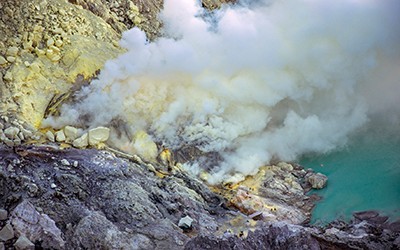
Unique Insights with Hyphenation
Any existing TGA or TGA/DSC instrument can be combined with a gas analysis system, including MS, FTIR, GC/MS or Micro GC/(MS). These techniques can help identify the sample’s composition.

Increased Throughput
Up to 34 DSC or TGA samples can be automatically processed, each with a specific method including the final evaluation and result assessment. A unique feature of the sample robot is that it can open crucibles before the measurement, so that the sample is protected until the measurement begins.
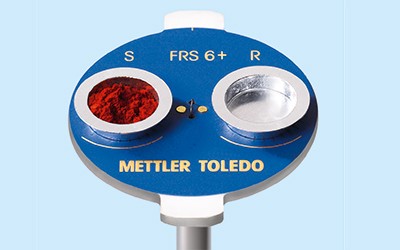
High-Performance MultiSTAR® Sensors
Choose between two sensors, one with 56 thermocouples optimized for high resolution and the other with 120 thermocouples optimized for high sensitivity with a low signal to noise ratio.
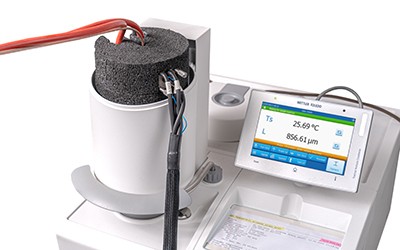
Special Options
You can expand your DSC instrument to a DSC-photocalorimetry system for the investigation of light curing samples. Another option is the camera system, which adds microscopy functionality to your DSC. We also offer sorption solutions for TGA, TMA and DMA, allowing measurements under defined levels of humidity.
Explore Our Services - Tailored to Fit Your Equipment
According to the International Confederation for Thermal Analysis and Calorimetry (ICTAC), thermal analysis is group of techniques in which a physical property of a substance is measured as a function of temperature while the substance is subjected to a controlled temperature program.
Support & Repair

Training & Consulting

FAQs
How do I expand the functionality of a thermal analysis system?
All METTLER TOLDEO thermal analysis systems are based on a modular concept, allowing them to be upgraded at any time. There are a wide range of options and accessories available to expand the functionality of our systems. No matter the application, there is optional equipment for the expansion of every system. This includes the possibility to add various accessories such as: cooling devices, automatic sample changing systems, humidity generators, evolved gas analysis instruments, and optics, which ensure the optimized operation of a thermal analysis system.
How does a sample robot improve workflows?
Attaching a sample robot to a TGA, DSC, or TGA/DSC instrument enables 24/7 operation. Precise and reliable robotics together with an integrated software solution ensures all samples are measured in a consistent manner. This leads to a higher throughput of samples, and increased laboratory production. An added benefit of the sample robot is the automatic lid piercer. This allows samples with volatile components such as moisture, or conversely, if hygroscopic samples absorb moisture to be measured more accurately.
What types of optical accessories are available for a DSC instrument?
Adding a microscope or UV lamps to a DSC instrument provides extra functionality to an already powerful system. Our specially engineered support system enables either of these accessories to be added to a DSC within minutes. Observing thermal effects and solid-solid transitions is made possible with an optical microscope. It provides information of processes that generate little or no change in enthalpy, as well as simultaneous image analysis along with the DSC curve. Discover the effect of UV light on a sample with our Photocalorimetry options. We provide three different light sources to match your application. This option is mainly used to study photo-initiated reactions (curing), and stability behavior (ageing) of materials.
What is evolved gas analysis?
A METTLER TOLEDO TGA or TGA/DSC instrument is easily coupled to an external device to qualitatively measure the gaseous reaction or decomposition products, formed in a TGA experiment. We have engineered special interfaces for our TGA instruments to allow coupling to a Mass Spectrometer (MS), a Fourier Transform Infrared Spectrometer (FTIR), Gas Chromatography (GC/MS), or a Micro GC/MS system.
What is the effect of humidity or moisture on materials properties?
Measuring samples under a defined relative humidity (RH) condition is a very powerful tool to observe the effect of moisture on a sample. Using uniquely designed interfaces and furnaces, a humidity generator can be attached to a TGA, TGA/DSC, TMA or DMA instrument. Using these four upgradable systems, it is possible to measure the properties of materials and the effect of moisture content for real world resting. For example, the material processing conditions can be simulated, shelf life can be determined, or any change in structure properties can be monitored.
